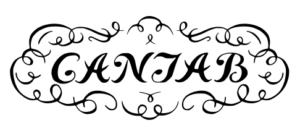RESEARCH
Our rebuild project has a vital research element. In order to determine exactly how all the individual parts assemble together, it was necessary to study in detail all 4000 or so individual drawings. This exercise can be likened to being given four jigsaw puzzles all mixed up together and from which one picture has to be constructed. This was obviously a very time-consuming task but when done, one just knew instinctively that the picture is correct.
The assembly drawings which we have produced for the Target machine have these same characteristics and one has high confidence in that what has been created is correct.
This project can now be considered to have had three overlapping elements. These were
- Research into all types and variants of Bombe
- Research into our target machine.
- The rebuild project proper.
Any attempt to separate these would be virtually impossible and in the end counterproductive. For example, information discovered about other versions often sheds light on the target
All we have to do sometime is to complete the other three jigsaws which roughly equate to the earlier 3 wheel Bombe, the four-wheel, high speed, (Keen) BTM Bombe and the Jumbo. This is obviously a bit of a simplification but should give some idea of the complexity of this research activity.
ASSEMBLY DRAWINGS
Very few assembly drawings were available with the original set produced by BTM and the parts schedule turned out to have about 10% of the individual items unlisted. It has been necessary to trawl again through all the 4000 or so drawings on numerous occasions to find missing component drawings. On top of this the fact that many drawings were missing added complication. During 1998 we pieced together the whole of our Target Machine and completed this operation in 2003. Most of this work was completed in the first two years. What was left until 2003 were the external covers. The cover drawings could not be completed until the machine was well advanced because there were never any cover drawings produced for our target model during WWII. A gentleman who was involved in their manufacture in the early 1940s tells us that covers were made at the last moment to fit the particular machine. We had to follow the same approach.
INFORMATION SOURCES
In order to arrive at a full understanding of how the Bombes were made and operated we had to bring together all the pieces of a jig-saw. We may have made some progress without all of the ingredients but the final good progress was due to having available all of the items listed below. Without any one of them, progress would have been much slower.
What we have available is the following
- Documents and photographs recovered from the American National Archive. This includes a report, useful technical information and some medium quality photographs.
- Bombe component drawings produced by BTM and sent to GCHQ Eastcote or Cheltenham in 1946. These were returned to BP around 1995 and we have 4000 or so of them. These have been copied in small batches for security reasons.
- There were virtually no assembly drawings in this collection. However, from GCHQ came parts schedules for particular types of Bombe and whilst being quite helpful have been found to contain a large number of errors and omissions which led us into many time consuming blind alleys.
- With the help of those, we have obtained general information relating to Bombes, which has been discovered in the National Archive previously the Public Records Office.
- We do not have circuit diagrams for volume production machines and these we had to recreate. We did have a few examples of early pre-production machine circuit diagrams but these have been as much misleading as useful because later machines differed considerably from these early versions. What we did have were the cable loom drawings with running schedules that allowed us to painstakingly investigate parts of the circuitry.
- Fortunately, we have discovered copies of Hollerith and IBM punched card equipment manuals held in the Science Museum Archive or we had them donated by ex BTM field engineers. We also collected together with the generosity of many ICL colleagues a comprehensive library of Hollerith/BTM service, technical machine & design and sales manuals.
- Technical working papers are written by senior members of the BP organisation during the early 1940s. Some are handwritten and there are about 56 in total, technical machine and design manuals.
- First-hand recollections from those who worked on the manufacture or operation of the Bombes.
- People who worked on Bombes in Letchworth during the war.
- Correspondence with people who had kept the Bombes operational at Out Station Eastcote and Out Station Stanmore.
- Plus engineers, both RAF and GPO, who maintained the Bombes at both Eastcote and Stanmore and not forgetting the WRNS who operated them.
- Design and Engineering staffs who although they did not work on the Bombes themselves were deeply involved in the general design of Hollerith equipment during and after WW II. Amongst these is incidentally Doc Keen’s son.
